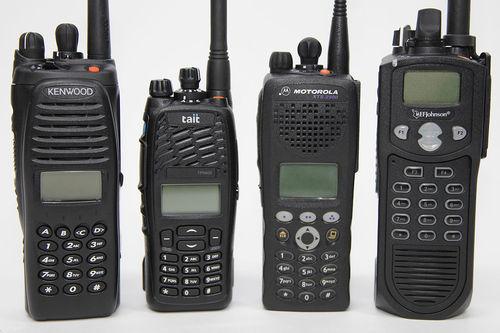As pervasive as cell phones are these days, there is still a need for two way radios in specific professional settings.
You might think cellular phones are the ultimate communication solution for most industries today. But Many organisations find that they can’t always rely on the cellular network and prefer to have an alternate form of communication available at all times.
Professionals in industrial, business, security and government industries broadly use this type of communication system.
If your work lies somewhere along with these disciplines and requires operational efficiency, you may want to consider investing in quality radio receivers.
What Is a Two Way Radio?
A two-way radio, or a radio receiver and sometimes a walkie-talkie, is a device that can transmit and receive audio signals, unlike a radio that only receives. It allows one-to-many communication, as opposed to a cellphone that permits only one-to-one.
In most cases, two way radios are not in direct competition with these other technologies. Yet, there are several lines of work where radio-receivers are the more competent and more cost-efficient choice.
Advantages of Two-Way Radios
Here are the top reasons why a two-way radio system works better than cellular-based solutions.
- Lower Ownership Cost. Even in the budget-friendly range, today’s smartphone models start at $300 and increase in price depending on the functionality. Cell Phones usually cannot be shared as well, so companies need to issue one per employee.
A two-way radio can go as low as $249 with all the essential functions already.
There will be no service contracts, monthly fees, roaming charges, or a limited number of calling minutes. Several employees can also share it in shifts.
- Durable. Unlike cell phones, where we are too careful not to drop, two way radios are designed to match military specifications. These communication types can withstand impact, dust, vibration, water intrusion, and extreme temperatures.
Two-way radio has a longer battery life than a cell phone – with almost 16 hours capacity. These types have portable batteries, so users can easily pop in new ones when power outages and other extreme circumstances happen.
Nonetheless, radio-receivers remain generally lightweight and compact. They are ideal to use in busy, rushed, and heavily dynamic work environments for their resiliency to shock while being sleek and easy to carry at the same time.
- Instant Connectivity. Two-way radio systems can connect any size of a group of communicators with a press of a button, as long as they have the same radio frequency, of course.
Such a feature is essential in emergencies and hazardous environments where the speed of exchanging information is crucial, such as issues with security or communication between power plant sites.
- Better For Remote Sites. About the factor above, radio-receivers are more practical to use in remote sites. Cell phones become limited by an active cell tower, and a radio’s non-reliance on a network can help in such situations.
Areas with spotty coverage or emergency network outages are common occurrences in several industries, and it is wiser to use two-way radio systems instead of continuous communication.
- More Secure Conversations. Companies can restrict two way radios for system use only, and it is easier to supervise than with cellular phones. Employees cannot use them for other purposes such as personal calls, making your fleet management more accessible and efficient.
Besides strict system use, you can also secure your conversations using digital encryption. It means converting data to an encoded format that only authorised parties can access and eliminates leaking secure information.
Good communication is essential to any type of work, but the best mode of communication to use will depend on your industry. If your priorities are security, operational efficiency, and emergency and remote communication, then a two-way radio system is the way to go.













